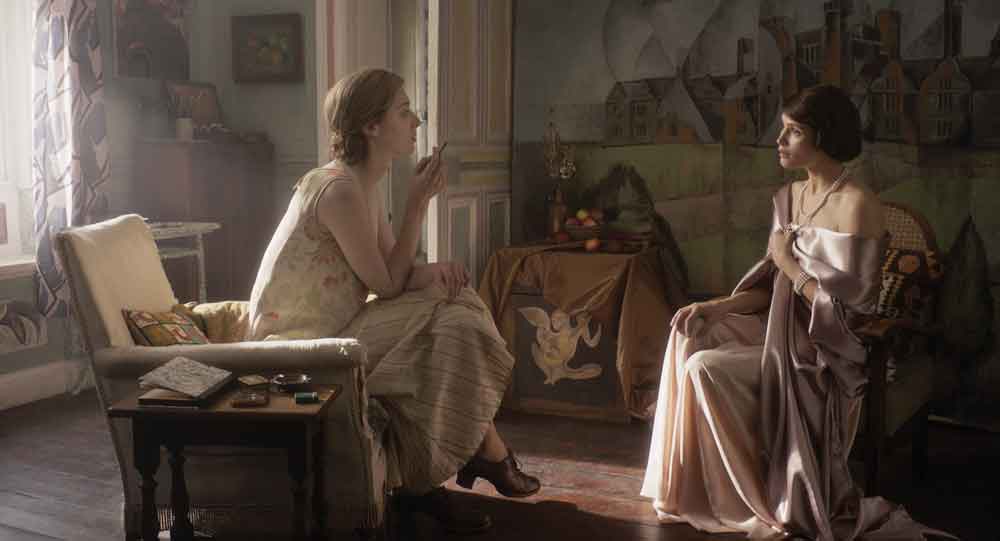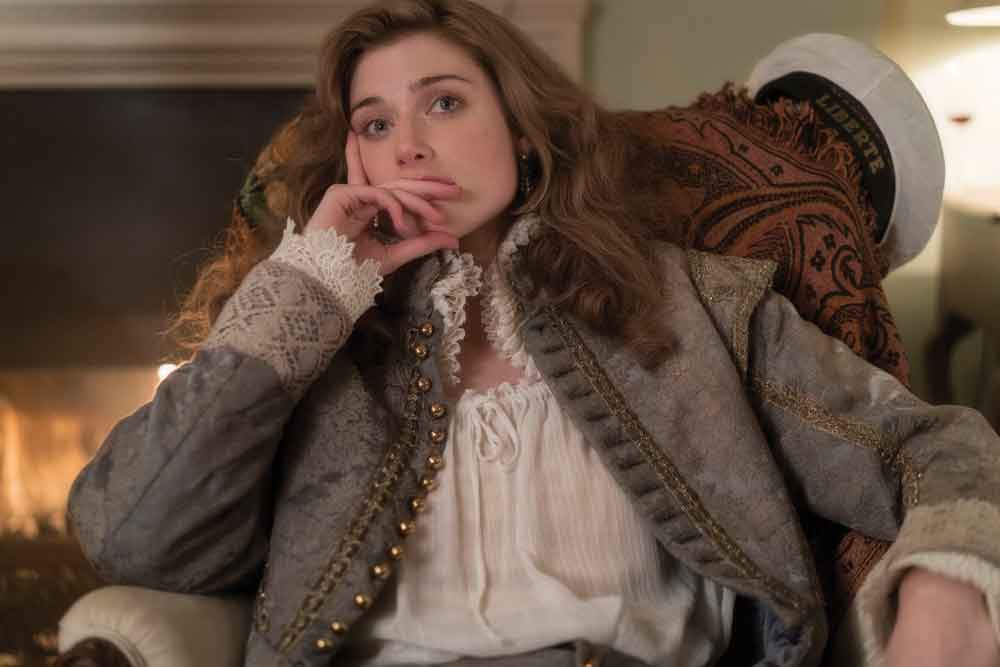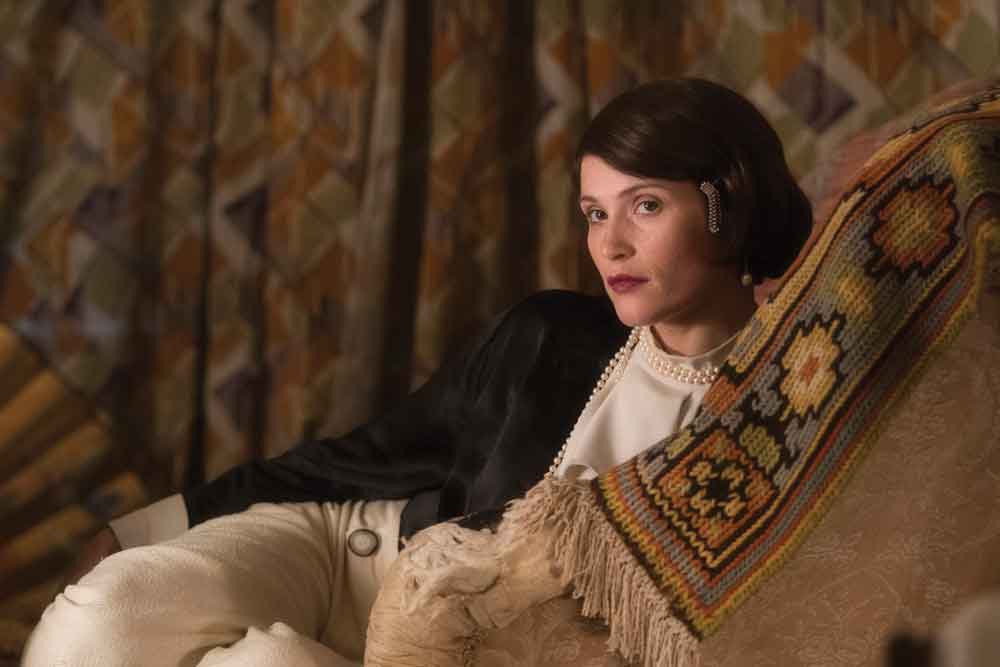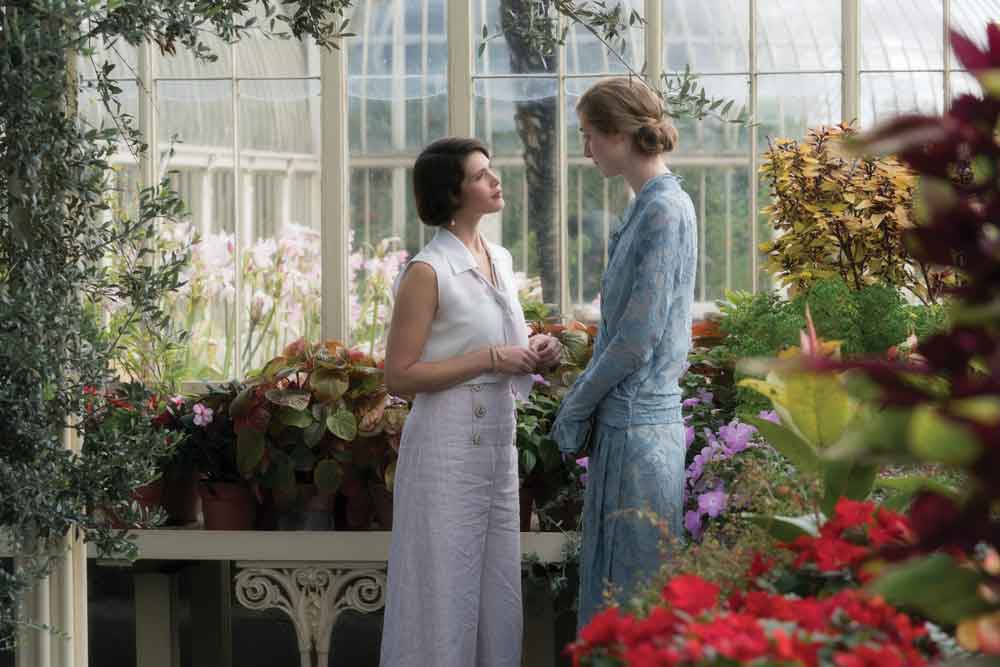by joel martens ~

History has a lot to teach us about fighting for what you want in the face of oppressive social conventions. Virginia Woolf and Vita Sackville-West were two women who—though alive at a time when expectations of marriage, motherhood and subservience to a husband were de rigueur—quietly defying those strictures by creating a world within uniquely their own.
Many believe tolerance is specific to our current moment, but truly it is not. Vita & Virginia is proof of that idea. The film tells the scintillating true story of an unconventional love affair that fueled the literary mind of one of the most celebrated writers of the 20th century. Set amidst the bohemian high society of 1920s England, it’s a story about love and loss, passion and power, and the fine line between inspired creativity and insanity.
Director Chanya Button sat down with The Rage Monthly to discuss her fascination with Virginia Woolf and Vita Sackville-West, her love of the book Orlando that peaked her fascination and the film born of that inspiration.
This film is lovely and felt a bit like seeing inside Virginia Woolf’s mind, as she was thinking about and struggling with her relationship with Vita Sackville-West. You managed to walk the line between inspiration and madness so effectively. What drew you to the story of these two women in particular?
Virginia Woolf is one of my favorite writers. Gemma Arterton, who plays Lady Sackville-West, is a friend of mine, and she brought me the project knowing how much I love Woolf. It was written by Eileen Atkins and I didn’t dare dream I’d get to work with her and make a movie about Woolf so early in my career.
Gemma sent me a very early draft of the script, which was based on Eileen’s play that she performed on Broadway with Vanessa Redgrave. It was a process then of working very closely together with Eileen, and then she very generously handed me the baton. I took it and adapted it to bring out the elements that you see in the film today.

Was there a reason for dropping in at the specific timeline of Vita and Virginia’s relationship?
We decided to focus on the moment in their relationship where Vita betrays Virginia and that ended up inspiring Orlando, one of Woolf’s most iconic novels. It was a real turning point for her, personally and professionally. Virginia connects to a part of her identity she had never previously been able to connect to: her body, her sensuality and her sexuality. In her career too, because previous to her book Orlando, even though she was respected amongst the sort of avant-garde, literary, bohemian kind of elite, she was not a bestselling author Vita was.
There’s a wonderful shift that’s occurred and is reflected in this film around sexuality. It’s not the central part of the narrative any longer, it’s just a piece of who the characters are as humans.
It’s relevant that they are two women, but for me it’s not a coming-of-age, coming out, wrestling with sexuality story. It’s relevant that it’s a same-sex relationship, but they’re not questioning that part of themselves. That’s what is important and what feels like should be the inspiration. Even if Vita and Virginia’s sexuality was at odds with the expectations of their time, they themselves were completely at peace with it: The idea that this is who I am, this who I am in love with, this is who I am having this intense experience with. That’s the most interesting part and it allows you to focus on the relationship rather than on the physical.
Can you talk about how much Woolf’s book Orlando influence your vision for the film?
Greatly. The novel sort of finds a home in the various corners of the film on various levels. A lot of the imagery in the film, our sort of surreal moments when Virginia is disappearing off into her own little inner world, those images we interpreted from Orlando. A lot of the dialogue was also inspired by the book as well as the look, the color palette, and the poetry of it all. Virginia was writing a novel about Sackville-West and had she wanted to just catalog her life, she could have written a biography, but she didn’t. She instead chose to write a creative novel about Vita as a protagonist who shape-shifts from male to female… a chameleon who travels across 300 years.

My interpretation of that concept was that if I was inspired enough about someone to write Orlando, who would that person be? That was very interesting for me as a process. I knew Orlando the novel before, I knew much about Vita Sackville-West, but then to imagine Woolf, the person who extrapolated that? Wow!
That became the theme of the film, to create an ever-changing main character based on the lead character in Orlando. One like Vita, who every chance Virginia saw her, must have appeared to become a different iteration of herself. That was a very interesting process, working backwards to figure out what kind of amazing creature could inspire that in the novel.
How did the film evolve as you were making it? Did your idea of the story change as you were going through the process of creating it?
It was kind of like a snowball, in that layers were added. It grew on itself and it deepened a lot and grew muscle. I worked collaboratively with key people: My cinematographer Carlos De Carvalho, designer Noam Piper, and my composer Isobel Waller-Bridge, who is absolutely amazing. [Waller-Bridge used the rhythm of Elizabeth Debicki’s actual heartbeat (Woolf) to score Vita & Virginia.] She was involved very early on as I was writing the script to find the sound for the film: We wanted it to be very contemporary to reflect the progressive nature of the two women who it was about. So, the film didn’t so much change, as much as it was more like a muscle that grew and grew as each person came on board the project.
It shows because there is a density to the film, musically, visually and in how the characters are developed. It put me in mind of Merchant Ivory films. When you approached the film, was that richness something you envisioned and planned for or did that evolve as well?
Oh wow, what a compliment! I definitely approached it from that standpoint. It’s probably one of the most personal things that I’ve made and it is so much of what I had in my head. It’s so representative of who I am as a filmmaker as well, it was very personal and felt very natural to me.
I also think it was notable that you didn’t invest in a “she’s good or she’s bad” sort of sensibility. The characters were all deeply human and deeply flawed and constrained by conventions, but not portrayed as victims.
It was a time when every women was expected to marry, be a mother and kind of had to “tow the line.” Vita & Virginia at its heart is about two women who defied the conventions of their time—making marriage work for them and bending the institution to their will—they both had relationships in which they cared very deeply for the men they were married to.

There was no “bad guy,” and it was something we were very conscious of while making the film. We wanted it to be about a community of people where no one says “No” to each other. It’s very mature and very much an adult landscape in telling this story. The realities of being an adult, with no finite right or wrong and no victim. These were two women who were meeting social expectation and yet making the conventions work for them, successfully.
Vita & Virginia landed in theatres stateside on August 23. Check your local listings for locations and showtimes or go to ifcfilms.com/films/vita-virginia.